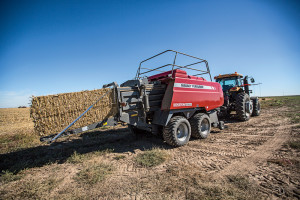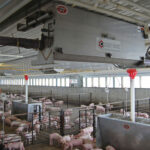Biomass Harvesting: Win-Win, and Then Some
Still in its early stages in North America, the harvesting and processing industry for cellulosic ethanol now has something to show for years of research and planning in the form of three new cellulosic ethanol plants. Bill Levy, chief executive...
Biomass Harvesting: Win-Win, and Then Some
Still in its early stages in North America, the harvesting and processing industry for cellulosic ethanol now has something to show for years of research and planning in the form of three new cellulosic ethanol plants. Bill Levy, chief executive...Still in its early stages in North America, the harvesting and processing industry for cellulosic ethanol now has something to show for years of research and planning in the form of three new cellulosic ethanol plants.
Bill Levy, chief executive officer of PacificAg, believes the North American biomass industry is poised for growth. “Over the next decade or so, it will become a major market,” he says.
Two of the three new cellulosic plants are in Iowa—one operated by DuPont in Nevada; the other in Emmetsburg is run by South Dakota-based ethanol producer POET/DSM—and both process corn stover. The other facility—located in Hugoton, Kan., and run by Abengoa Bioenergy Biomass—uses some wheat straw in addition to corn and milo stover, all of which is supplied exclusively by PacificAg.
For every 180 bushels of grain, the average producer will have about 4.3 tons of stover. To maintain sufficient organic matter in the soil and to prevent erosion, the USDA advises leaving an average of 2.3 tons per acre on the ground. Studies have shown that leaving too much residue can increase the likelihood of disease the following spring, make planting more difficult and use up nitrogen.
“The biggest benefit we bring growers is an alternative method for managing high residue,” says Denny Penland, business development manager for DuPont Cellulosic Ethanol. “And it also produces a platform for producing next year’s crop of corn.”
In Canada, there are currently no biomass plants online or in the works, but Charles Lalonde, a project manager with the Ontario Federation of Agriculture, says he expects that’s going to change in the next few years. He says there will soon be demand for corn stover and wheat straw inside Canadian borders.
“With corn stover, we’re trying to develop a market for it in bioprocessing,” Lalonde explains. He anticipates that facility will focus on using cellulosic material to produce sugars for use in various biochemical productions.
U.S. plants making ethanol from grains, mainly corn, are currently at capacity, producing 12 billion to 13 billion gallons annually. “Right now, the industry is waiting for the cellulosic side of these projects to get up and running,” Levy says. By comparison, it’s estimated that the new plants will be able to produce around 75 million gallons of cellulosic ethanol a year.
Plans for seven new cellulosic ethanol plants have been announced by the USDA, three of which will use agricultural waste, while the others will use resources like wood chips, wood waste and municipal solid waste.
And while the bulk of the U.S. market now is corn stover, Glenn Farris, AGCO’s manager of segment strategy for biomass/industrials, expects a market for dedicated energy crops to emerge, such as Miscanthus and switchgrass.
Farris says he believes that by 2030 more producers will see 300 bushels of corn per acre. That means 8 to 10 tons of stover per acre on the ground within the next 15 years.
Says Levy, “I think we’re going to see a revolution in the biomass market in the years to come. As the world turns to renewable energy, agriculture is going to be a direct benefactor.”
For more see, http://www.myfarmlife.com/advantage/biomass-harvesting-win-win-and-then-some/.




